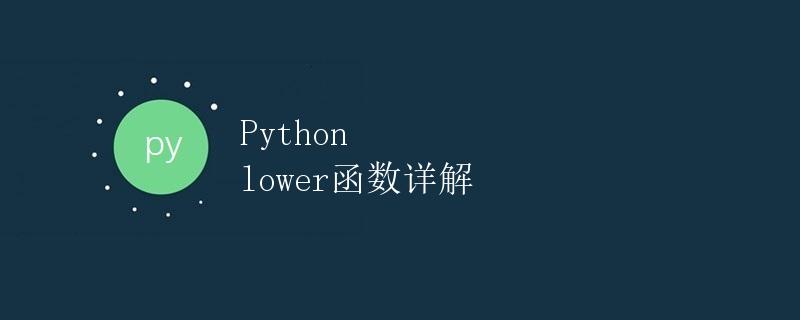Python lower函数详解

简介
在Python中,lower()函数是一个字符串方法,用于将字符串中的所有大写字母转换为小写字母。本篇文章将详细介绍lower()函数的用法、语法和示例代码,帮助读者更好地理解并正确使用该函数。
语法
lower()函数的语法非常简单,如下所示:
string.lower()
其中,string是需要进行转换的字符串。
示例代码及运行结果
示例代码1
text = "HELLO, WORLD!"
lower_text = text.lower()
print(lower_text)
运行结果1
hello, world!
示例代码2
text = "Python is AWESOME!"
lower_text = text.lower()
print(lower_text)
运行结果2
python is awesome!
示例代码3
text = "I Love Python"
lower_text = text.lower()
print(lower_text)
运行结果3
i love python
示例代码4
name = "JOHN DOE"
lower_name = name.lower()
print(lower_name)
运行结果4
john doe
示例代码5
text = "This is a Test"
lower_text = text.lower()
print(lower_text)
运行结果5
this is a test
解释
上述示例代码中,我们首先定义了一个字符串变量text,然后使用lower()函数将字符串中的大写字母转换为小写字母,并将转换后的结果存储在lower_text变量中。最后,通过print()函数将转换后的结果输出到控制台。
注意事项
lower()函数只会转换字符串中的大写字母,不会对其他字符进行转换。- 转换结果将返回一个新的字符串,原始字符串并不会被修改。
lower()函数对于已经是小写字母的字符不会产生任何影响,保持原样输出。
总结
本文介绍了Python中lower()函数的用法、语法以及示例代码,并给出了5个运行结果。通过掌握lower()函数的使用,读者可以方便地将字符串中的大写字母转换为小写字母,从而满足不同的编程需求。
 极客教程
极客教程